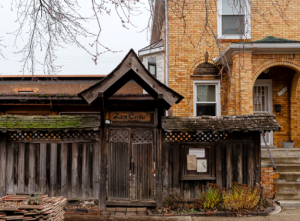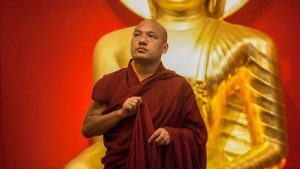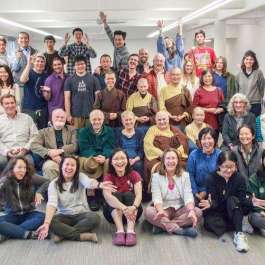
Many package tours to Japan include a tea ceremony. Sometimes these short versions of a traditional tea ceremony––otemae or cha no yu ––take place in the tea room of a hotel or public building, or in a separate tea house. For the most part, visitors love the serenity of the ambiance and the purposeful way in which the tea is enjoyed, which seem to foster a comportment of mindfulness. However, for the most part, both hosts and guests will refer to this experience as a cultural rather than a religious one. The tea ceremony is often conceived as an expression of an ineffable “Japaneseness” rather than as a religious practice. While it is true that “Japanese” tea practice has its own flavor, this separation of religious and cultural practices may miss an important point.
To begin with, I would like to recall the history of tea ceremony in Japan. Formalized tea practice began in China and its beginning is usually identified with the Tea Scripture, written in the Tang dynasty (618–907) by Lu Yu (733–804). The practice of tea was introduced to Japan at the beginning of the 9th century by the founder of Japanese Tendai (Ch. Tiantai) Buddhism, Saicho, also known as Dengyo Daishi. It is said that his contemporary and the founder of Shingon Buddhism, Kukai (known as Kobo Daishi), was the first to use the phrase “cha no yu” to refer to the formalized practice of tea. During the later part of the Heian period (794–1185), tea practice became an entertainment of the nobility, who regularly held tea competitions (tocha). Then, at the beginning of the Kamakura period (1192–1333), the founder of Japanese Rinzai (Ch. Linji) Buddhism wrote about the medicinal value of tea in his treatise Kissa yojoki, and Zen Buddhists started to use it as a stimulant during the longer meditation periods. By the beginning of the 16th century, two traditions of formalized tea practice had developed in Japan, the tea of the nobility (denchu chanoyu) and the so-called “aesthetic tea” (wabicha). The formalized tea ceremony as it is practiced in Japan today was developed by Sen no Rikkyu (1522–91), who served both shoguns Oda Nobunaga (1535–82) and Toyotomi Hideyoshi (1536–98) as “tea master” (chashi). Today, there are two schools that claim his heritage: Omotesenke and Urasenke.
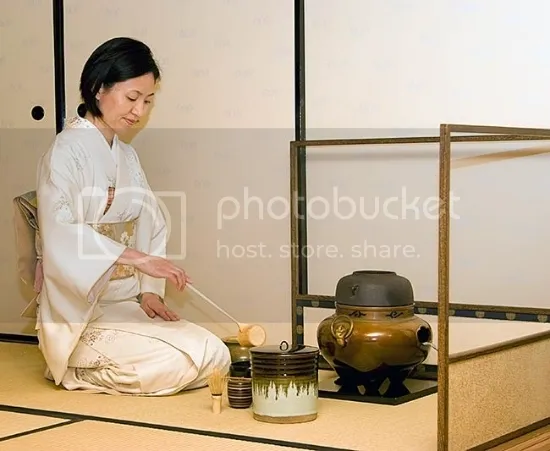
A full, traditional tea meeting (chakai) was a longer affair and took most of an afternoon. The tea house was set off from the everyday world and accessed through a gate. Before the guest could enter the tea house proper, one was required to wash oneself at a temizuya, or water basin, and change into clothing prepared by the host in a separate building, in which the guest was also served a meal. The guest was only then allowed to enter the tea house proper, through a very small entrance that required one to crawl on hands and knees. Today, the separate waiting house and the formalities just described are rare. If a meal is served at a tea gathering today, it is eaten in a separate room of the same building.
Once inside the tea room, the guest turns to an alcove, the tokonoma, which is adorned with a single scroll and flower. Only after paying one’s respects at the alcove does the guest sit down on the tatami mat. Other than the alcove, the tea room is very simple, with a tatami-covered floor. In addition, by the time the guest enters the tea room, the hearth (furo) and some of the utensils (the tea pot [furosakibyobu], a container with cold water [mizusashi], the tea bowl [chawan], the whisk [chasen], a tea “spoon” [chashaku], a white cloth to clean the tea bowl [chakin], and a tea container [natsume]) have already been prepared.
The host enters from the opposite side of the room and brings sweets to be eaten with the tea. The tea practice then starts officially, with a formal greeting. The host re-enters the tea room with the remaining tea utensils, a bowl for the used water (kensui), a tea ladle (hishaku), a piece of bamboo on which to place the ladle (futaoki), and a special silk cloth to ritually purify the dry utensils (fukusa). The tea practice itself has five parts: 1) cleaning the utensils; 2) making the tea; 3) serving the tea; 4) cleaning the utensils; and 5) presenting the utensils to the guest for examination. After the tea practice, host and guest exchange formal greetings and leave through separate exits.
A close study of the practice itself discloses five fundamental characteristics: 1) every tea meeting is themed, with dress, meal, tea, sweets, flower, and scroll selected to express a specific idea or feeling appropriate to the occasion and season; 2) host and guest move in two different areas of the tea room, separated by an invisible demarcation line; 3) the tea practice itself is very deliberate, with every movement and aspect of the process of making and serving the tea highlighted, demanding a high level of skill and mindfulness; 4) the practice and conversation are highly formalized, and in the past, specially prepared clothing and formal conversation were used to de-emphasize social distinctions and hierarchies; and 5) the ambiance of the tea house as well as the practice are designed to emphasize simplicity, naturalness, and humility. In many ways, and not unlike Zen Buddhist “seated meditation” (zazen), the practice of tea is supposed to remind the practitioner of the basic necessities of life: sitting, breathing, and drinking tea.
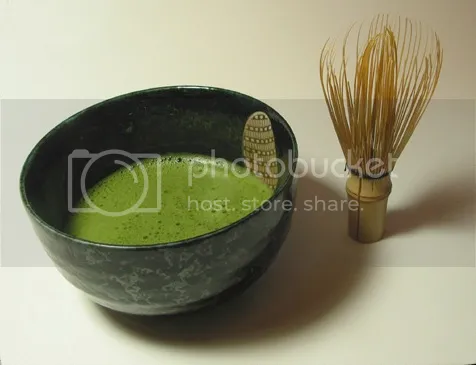
So, what is the purpose of this elaborate practice designed to remind us of the basics in life and the need for simplicity? In many ways, the tea practice exhibits the characteristics of a religious ritual: a clear separation between the everyday and the “sacred”; a distinction between ritual expert and participants; the creation of a space, time, and practice set apart from the workaday world where different rules apply; and the idea that the practice that occurs in this liminal space transforms the practitioner. On the other hand, the deliberate emphasis on the everyday practice of “making tea” seems to be at odds with our understanding of “religion.” However—and here is where it becomes interesting—the practice is an example of wabicha, which aims to make the “everyday” special or imports that which “transcends” the everyday into the realm of the mundane. As a matter of fact, the very practice of expressing the “sacred” in the everyday echoes the words of the Chinese Chan (Zen) master Nanquan Puyuan (748–835), that “the everyday is the way,”* and another Chan master, Mazu Daoyi (709–88), that “this mind is the Buddha.”** It also reflects Kukai’s exhortation “to become a Buddha in this body” (sokushinjobutsu). In this sense, we can say that in its emphasis on the everyday, tea practice offers a way “to meet the Buddha while drinking tea.”
*Junjiro Takakusu and Kaigyoku Watanabe, eds. 1961. Taisho Taizokyo (The Taisho Edition of the Buddhist Canon, hereafter abbreviated as “T”), 48.2005.0295.14. Tokyo: Taisho Shinshu Daizokyo Kankokai.
** T 48.2005.0296.28.





